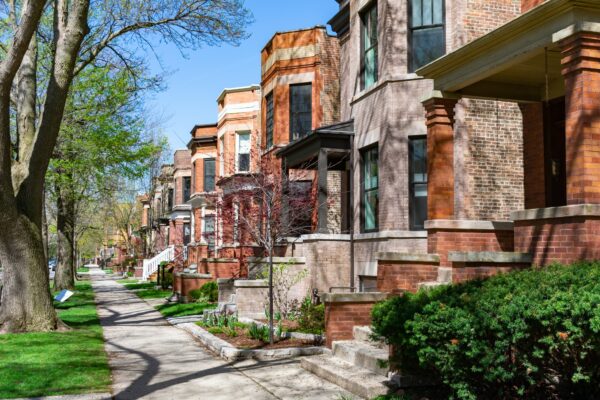What Is Section 8? A Practical Guide for Housing Professionals
What is Section 8? It’s a foundational program in the affordable housing ecosystem, offering essential support for low-income families, seniors, and people with disabilities. For property managers, landlords, and Public Housing Agency staff, understanding the Housing Choice Voucher (HCV) Program — commonly known as Section 8 — is critical to ensuring compliance, rental income stability, and long-term operational success.
Administered by the U.S. Department of Housing and Urban Development (HUD), Section 8 allows eligible households to rent private-market housing with assistance from federal subsidies. While this program offers substantial benefits, it also requires in-depth knowledge of HUD regulations, evolving inspection standards, and local housing codes.
Understanding the Section 8 Housing Choice Voucher Program
The Section 8 Housing Choice Voucher Program is HUD’s primary tenant-based rental assistance initiative. Unlike project-based subsidies that attach to specific units, vouchers under this program go directly to qualified families. With a voucher, households can choose to rent any private unit that conforms to HUD’s Housing Quality Standards (HQS) or the updated NSPIRE format.
Local Public Housing Agencies (PHAs) manage the day-to-day administration of the program. This includes determining tenant eligibility, issuing vouchers, approving units, and conducting inspections. Once approved, landlords sign a Housing Assistance Payment (HAP) contract with the PHA, while tenants enter into a lease with the landlord. Rent is paid in part by HUD via the PHA, and tenants contribute an amount based on their adjusted income level.
For property managers aiming to secure steady occupancy and reliable income, mastering how Section 8 works — from rent reasonableness to documentation and inspections — is a competitive advantage in tight rental markets.
New HUD Requirements: From HQS to NSPIRE
A vital component of maintaining Section 8 eligibility is passing HUD-mandated inspections. Previously guided by the Housing Quality Standards (HQS), inspections are now transitioning to HUD’s newly adopted National Standards for the Physical Inspection of Real Estate (NSPIRE). Launched in 2023, NSPIRE brings a modern, health-centered approach to property conditions and corrections.
Key shifts under NSPIRE include:
- Severity Ratings: Deficiencies are classified into Life-Threatening, Severe, and Standard, each with specific correction windows.
- Health and Safety Priority: Greater emphasis on features impacting resident life — such as inoperable smoke detectors, leaks, and emergency egress.
- Standard Integration: NSPIRE unifies inspection requirements across multiple HUD programs, streamlining oversight.
For example, NSPIRE mandates correction of a life-threatening issue — like a missing smoke alarm in a sleeping area — within 24 hours. Property teams must now incorporate smoke and carbon monoxide detector checks, egress route inspections, and pest control into regular maintenance routines.
The implementation of NSPIRE varies by location and housing program. Owners and managers in both the Housing Choice Voucher and Project-Based Voucher programs should consult their PHA for detailed transition timelines.
How to Avoid Common Section 8 Inspection Violations
Many Section 8 inspection failures are preventable. Most violations stem from property upkeep issues that jeopardize resident well-being or signal broader neglect. Based on HUD findings, typical deficiencies include:
- Inoperable or missing smoke and CO detectors
- Peeling paint — especially in homes built before 1978 due to lead risk
- Broken windows, loose locks, or damaged doors
- Leaky plumbing, visible mold, or persistent pest presence
- Blocked exits or unstable stair railings
To maintain compliance and streamline inspections, apply these best practices:
- Use an NSPIRE-Based Checklist: Customize property walkthroughs based on HUD’s updated standards and document findings.
- Train Maintenance Teams: Educate staff on identifying and correcting high-severity NSPIRE defects.
- Schedule Preventive Maintenance: Seasonally inspect HVAC systems, outlets, railings, water heaters, and flooring.
- Keep Detailed Records: Log each inspection, repair, and tenant communication in a centralized system for audit readiness.
- Work with Inspection Experts: Third-party firms like The Inspection Group can provide actionable insights to close compliance gaps proactively.
Landlord Roles and PHA Responsibilities in the Section 8 Program
Participating in Section 8 forms a partnership between landlords and local Public Housing Agencies. While PHAs verify tenant eligibility, issue vouchers, and conduct inspections, landlords are responsible for unit conditions, lease enforcement, and compliance with federal, state, and local property codes.
Key landlord responsibilities in Section 8 include:
- Maintaining the unit in a safe, clean, and livable condition
- Respecting rent caps determined by the PHA and HUD
- Submitting any intended rent increases for pre-approval
- Correcting life-threatening deficiencies within 24 hours
- Addressing standard violations within 30 days
It’s important to remember that additional regional requirements may apply. For instance, landlords in California must also comply with the California Health and Safety Code, while New York City mandates specific lighting and elevator inspections. Ensure you’re familiar with local regulations that complement, or even exceed, HUD standards.
NSPIRE’s Impact on Section 8 Compliance and Operations
NSPIRE introduces a significant shift in how HUD compliance is measured. The former REAC scoring model focused on passing thresholds. NSPIRE, by contrast, centers on timely resolution and potential health and safety impacts. This results-based model demands faster action from property owners — especially concerning shared spaces and exterior conditions.
Examples of newly emphasized compliance areas include:
- Trip hazards on sidewalks or walkways
- Unsecured fencing or site perimeter issues
- Insufficient exterior lighting affecting tenant safety
- Malfunctioning building systems such as HVAC or electrical components in common spaces
To stay ahead, develop internal self-inspection protocols modeled on NSPIRE. Partnering with experts — like The Inspection Group — ensures your team can identify issues before HUD does, reducing delays or subsidy interruptions. Consistent documentation, resident complaint tracking, and unit turnover checklists are essential components of a successful compliance strategy.
Stay Compliant and Confident with Section 8 Housing Standards
Mastering what is Section 8 means more than managing rent subsidies. It requires an ongoing commitment to property condition, tenant health, and regulatory precision. With the nationwide shift to NSPIRE driving new expectations in 2024, landlords and housing professionals must be more proactive than ever in achieving and maintaining compliance.
Whether you manage scattered-site housing or entire communities, staying NSPIRE-ready is essential for uninterrupted rental income and program credibility. With proper systems and expert support in place, you can navigate Section 8 requirements with greater clarity and confidence.
Need professional help preparing for HUD inspections? Contact The Inspection Group to schedule a consultation or request on-site training tailored to your team’s needs.





